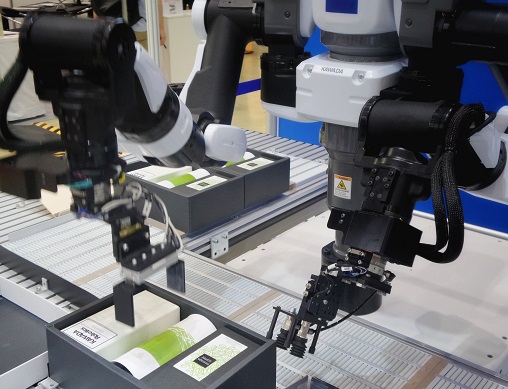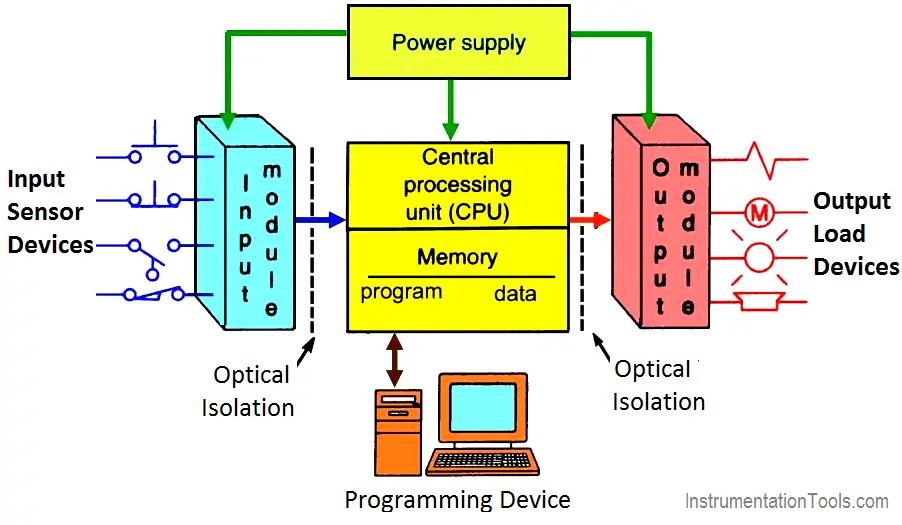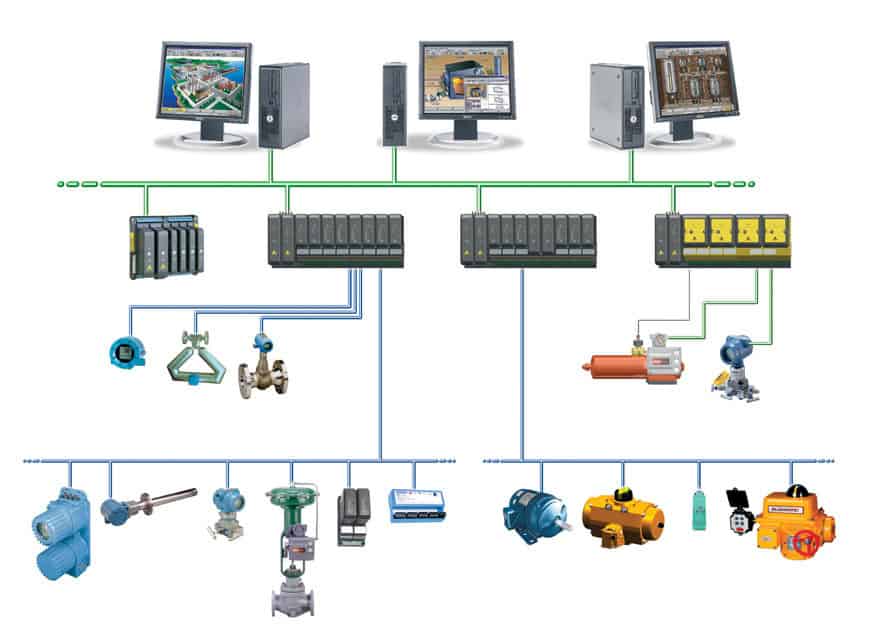The Difference between DCS and PLC

PLC (Programmable Logic Controller) and DCS (Distributed Control System) are both industrial control systems used for automation and process control in various industries. While they share some similarities in their functions, there are fundamental differences between them in terms of architecture, scope of application, and control philosophy:
PLC

image source: instrumentationtools.com
- A PLC performs a variety of tasks, such as continuous bottom-to-top PID control, PID in the interrupt station, switch quantity control, sequence control, and transportation processing.
- One PC can act as the master station, while other PLCs of the same type can be used as slave stations.
- Utilizing one PLC as the master station and numerous PLCs of the same type as slave stations is another method for building a PLC network. This is more practical than using a PC as the master station since user programming may be done by writing it in manual language without knowing the communication protocol.
- The PLC grid functions as both a stand-alone DCS and a DCS subsystem.
- The new PLC also includes closed-loop control capabilities. PLC is mostly utilized for sequential control in industrial processes.
DCS

image source: electricaltechnology.org
- The DCS incorporates the monitoring technology known as 4C (Communication, Computer, Control, and CRT).
- Use a top-down tree form in large systems when communication is crucial.
- The interruption station contains a PID, connects the computer to the field instrumentation and the control device, and connects the field instrumentation to the interruption station through several parallel connections.
- A microprocessor and an A/D/D/A analog signal are merged.
- One instrument is connected to the I/O by two lines, and the control station is what connects it to the LAN, or local area network.
- The DCS (field measurement and control station) has three levels: control (engineer station), operation (operator station), and field instrument. for the management of massive, ongoing processes, including petrochemicals, etc.
Engineering comparison of PLC and DCS
The program counter on the PLC CPU shows the storage address for the current program step. The program automatically increments the counter each time a step is finished, runs sequentially from the first step (step number is zero) to the last step (typically the end instruction), and then loops back to the first step to continue operations.
The length of time required by a PLC to complete one cycle operation is called a scan cycle. Depending on the type of PLC, the cyclic scan time might last anywhere between one microsecond and several tens of microseconds. Like the program counter, loop operations are absent from DCS. Due to this, PLCs are also less redundant than DCSs.
The foundation for DCS development is provided by operational amplifiers. All relationships between functions and process variables are represented by function blocks (also known as extruded blocks in some DCS systems). Where the performance of DCS and PLC differs the most is in the logic computation of switching quantity and the operation of analog quantity. Even if they later blend together, there is still a difference between the two.
The logic operations and algorithm functions of PLC control loops have advanced significantly since the 1980s, but ladder diagram programming is still used in PLC, making programming more challenging and analog operations less evident. However, it shows the value of speed when it comes to addressing logic problems; a 1K logic program may be solved in less than a millisecond. All other inputs are treated as switch quantities, while 16-bit (and 32-bit) inputs are treated as analog quantities.
The DCS treats each input as an analog amount, and the switch quantity is 1. A logic puzzle can be solved in a matter of milliseconds to hundreds of microseconds. PLC can resolve a pid operation in tens of milliseconds, as opposed to the operating time of DCS.
When it comes to grounding resistance, PLC may not be as demanding as DCS, which must be under a few ohms (often below 4 ohms). Analog isolation is also important.
For a system with the same number of I/O points, PLC costs less than DCS costs (savings of roughly 40% are possible). Since PLC uses universal software and hardware and doesn't need a unique operating station, its maintenance expenses are much lower than those of DCS. If the controlled item is mostly a chain of pieces of equipment with minimal loops, a PLC should be used.
If the control is predominantly analog and there are several function operations, DCS is recommended. When it comes to redundant controllers, I/O boards, communication networks, etc., some complex operations, and particular industrial requirements, DCS is considerably superior to PLC. Because PLC employs common monitoring software, it is easier to construct the enterprise's management information system with DCS.
PLC and DCS systems, respectively, can be used in discrete and process production. a PLC-based discrete manufacturing facility that has distinct production units utilized to complete item assembly, like labeling, filling, or grinding. Process manufacturing facilities usually use automated technologies to carry out continuous and batch manufacturing in accordance with a recipe rather than piecemeal. Large continuous processing plants like chemical and oil refineries employ DCS automation systems. PLC and DCS systems are widely employed in hybrid applications. When selecting a controller for an application, one must consider the size of the process, scalability and future update plans, integration requirements, functionality, high availability, and return on investment over the whole life cycle of the plant facility.




